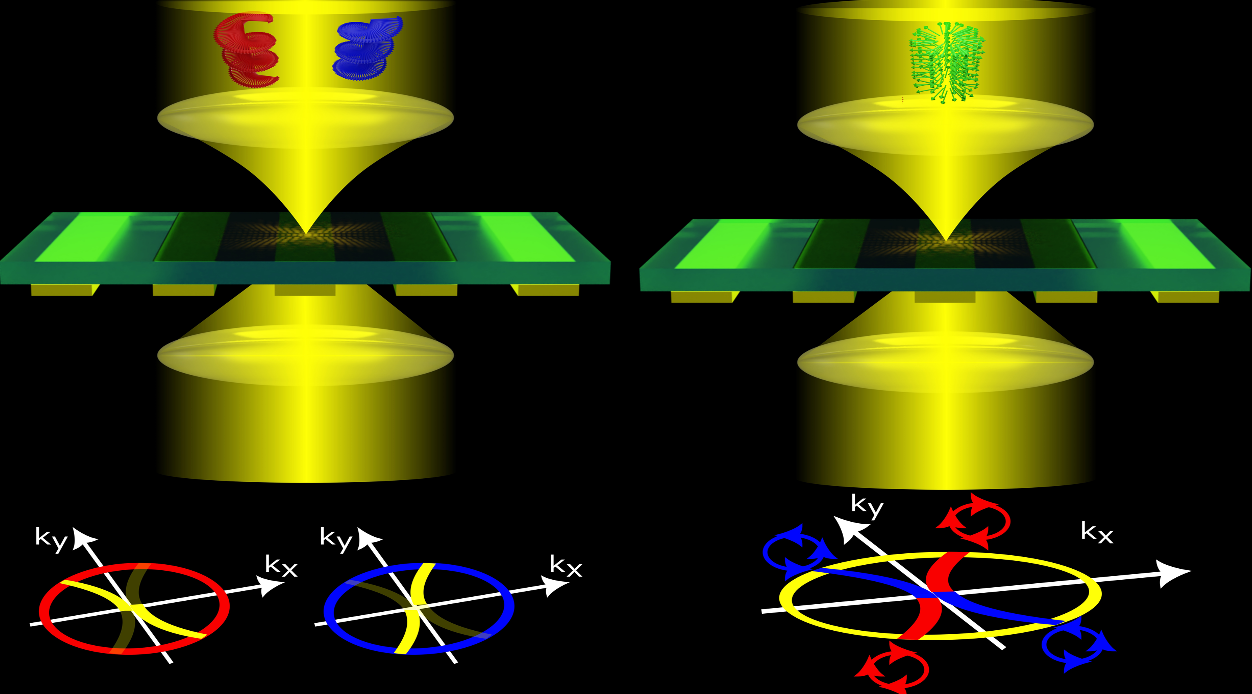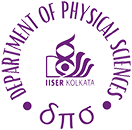
Spin-direction-spin coupling of quasiguided modes in plasmonic metamaterials
Simultaneous demonstration of the forward (left) and inverse (right) spin Hall effect of light in a waveguiding plasmonic crystal
Joint research of bioNap & Light Matter Lab., DPS
“Spin-Direction-Spin Coupling of Quasiguided Modes in Plasmonic Crystals” has been published in Phys. Rev. Lett. 131, 193803 (2023) and featured in the cover page. Jeeban Kumar Nayak, a PhD student of DPS and a former BS-MS student is the primary author of this paper. The other students who were involved in this research are, Shyamal Guchhait (PhD), Harley Suchiang (former BS-MS student), Subir Kumar Ray (former PhD student).
Brief description: The coupling of spin (SAM) and orbital angular momentum (OAM) degrees of freedom of light, the so-called spin orbit interactions (SOI) have led to a number of fundamental photonic effects in various light-matter interactions. These have not only provided new insights on the universal SOI phenomena in classical optical settings but also have opened up novel routes for the development of spin-orbit photonic devices. Among the various SOI effects, photonic spin-momentum locking has attracted particular attention due to its fundamental nature and potential device applications. We have observed an unusual spin-direction-spin coupling phenomena using the leaky quasiguided modes of a waveguided plasmonic crystal system. We have observed simultaneous spin controlled directional guiding of waves (spin-direction coupling) and its reciprocal effect of wavevector-dependent spin acquisition of the scattered light (direction-spin coupling) from the same nanophotonic system, which we have defined as `spin-direction-spin coupling' phenomena. While the former effect manifests as the conventional photonic spin Hall effect (SHE), the latter is known as the inverse SHE of light, which is rather new and has not been explored much. The inverse SHE of light reported in our system can be seen as an optical analogue of the spin-injection in the solid-state spintronic devices; where with unpolarized excitation (no input SAM), the scattered light acquires a particular spin polarization according to the scattering direction. These SOI effects are shown to be mediated by the evolution of space-varying polarization due to highly non-paraxial focused light and its subsequent interaction with the polarization-anisotropic quasiguided modes of the plasmonic crystal system.
The fundamental origin and the unconventional manifestation of the spin-direction-spin coupling phenomena from a relatively simple system, ability to probe and interpret the resulting phenomena in the far field through momentum-domain polarization analysis, and their regulated control in plasmonic-photonic crystals open exciting avenues in spin-orbit photonic research.
Link to the paper: https://journals.aps.org/prl/issues/131/19.
#Research Highlight
Posted on: November 13th, 2023

